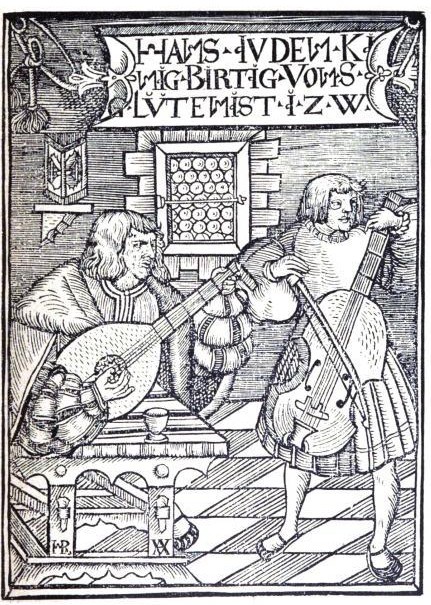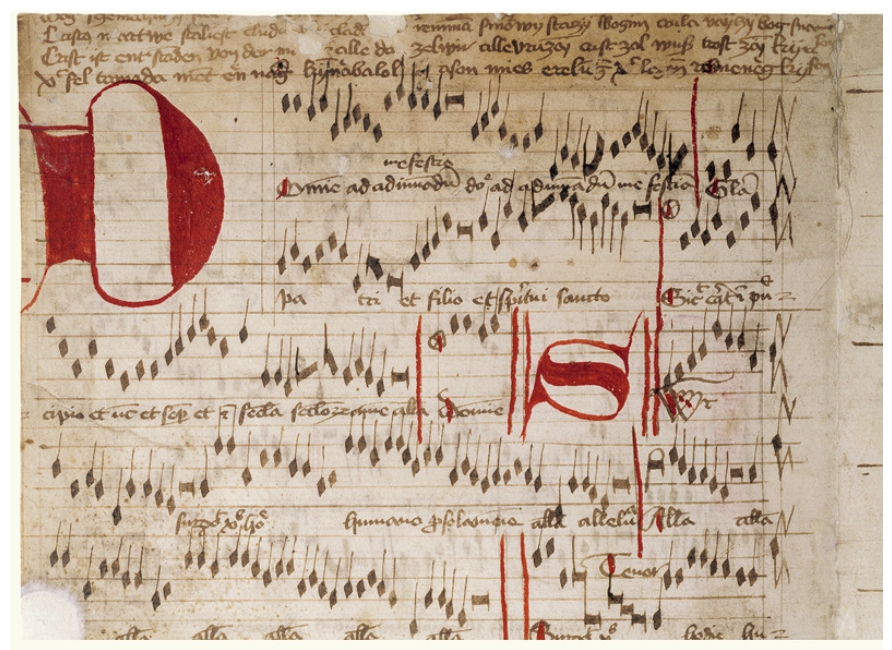Christ has Risen, a fragment from king Sigismund’s era (1387-1437) – Hans Judenkönig (1450-1526): Christ ist erstanden
Transcription of the fragment with medieval orthography in 4 languages:
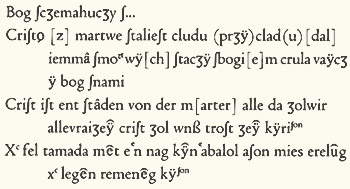
Hungarian lyrics:
Krisztus feltámada mind ő nagy kínjából, azon mi is örüljünk, Krisztus legyen reményünk, Kyrie eleison.
Lyrics in English:
Christ has risen from all his great pains, Let us too rejoyce on it, Let Christ be our hope, Kyrie eleison
ARCHLUTE
ARCHLUTE
copy built by Tihamer Romanek in 1999. The original instrument: Wendelin Tieffenbrucker (1551-1611, Padua), Brussels (M.I. No 1563).
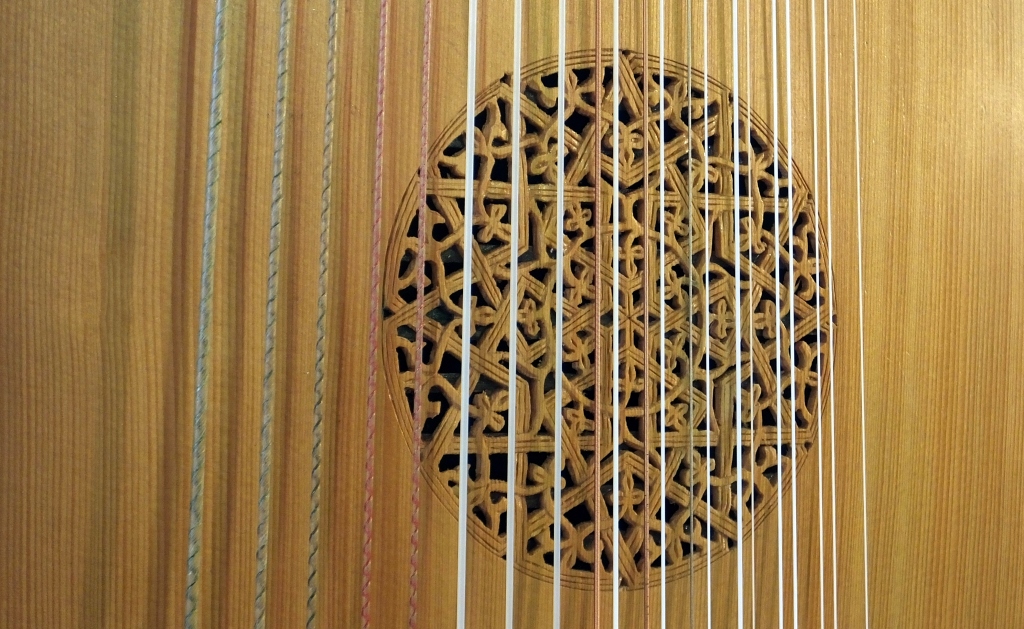
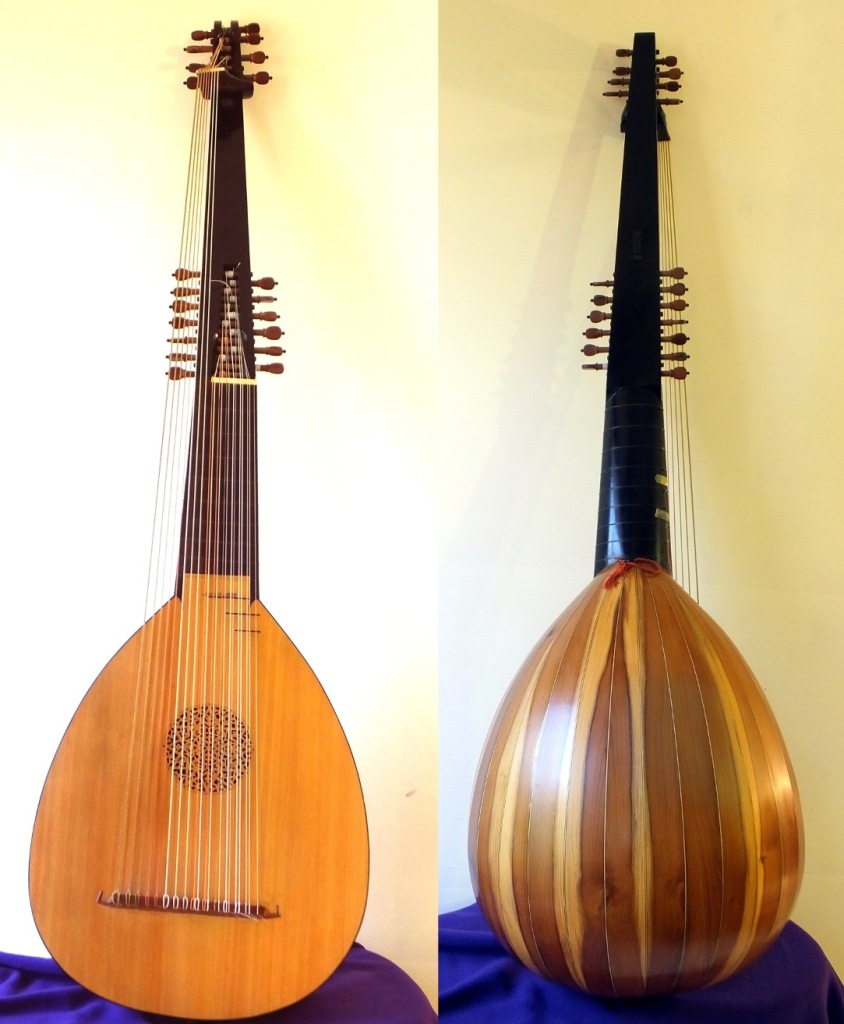
This is a recently sent live recording taken from the audience. A few years ago, I played in the chapel hall of the Jesuit “House of Dialogue” in Budapest at the opening of an art exhibition.
The 14th-century Hungarian lyrics was found in the binding of an ancient Highland (Northern part of Hungary up till 1920) incunabulum since older documents were used by bookbinders to reinforce bookplates. The Hungarian text written in medieval orthography can be seen directly above the sheet music – which by the way is a precious document of the two-voice singing practice of medieval Hungary – on the picture above the media player. The same lyrics in German, Polish and Czech languages are above the Hungarian lines though most of the Czech one fell victim to the bookbinder’s knife. This song is believed by music theorists to have been sung simultaneously in four languages at Easter during the solemn mass:
”Judging from the fragment of the Sigismund period, the Easter hymn ’Christ is risen’ represented the vernacular Easter chant already at the end of the 14th century. A hundred years later, Osvát Laskai mentions in his Gemma Fidei another Easter text sung by Hungarian soldiers before battle: ‘Christus surrexit, mala nostra texit’ (Now that Christ has risen, he washed our sins away).”
Rajeczky Benjamin, Music History of Hungary I, p. 84.
”The earliest surviving example is only one text: ‘Christ is risen from the dead, we too shall rejoice, Christ be our hope, Kyrie eleison’. It is written in Hungarian, German, Czech, Polish, as it might have been known in a town in the Highlands, and it seems that it was sung at the same time, each one in his own language, at Easter. From the state of the text’s language, it is thought that it may be a later legacy of the 14th century. Its melody is also easy to find in contemporary European and later Hungarian music.”
László Dobszay, Hungarian Music History p. 300.

I set the lyrics to the well-known “Christ ist erstanden” melody variant by Hans Judenkönig.
It is possible that the surprising name of the family which can be traced in the Gmünd archives from 1420 to 1477 belonging to the middle class of the guilds derives from the role of the “Jewish king” in an Easter Passion play.
The lute player may be a portrait of Judenkönig himself (woodcut from his “Ain schone kunstliche underweisung”)
